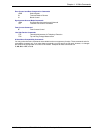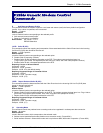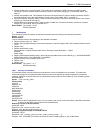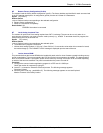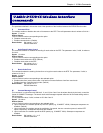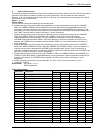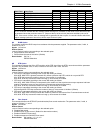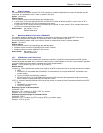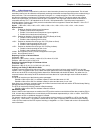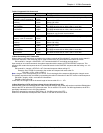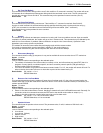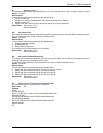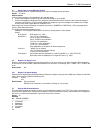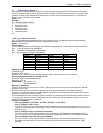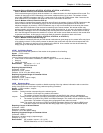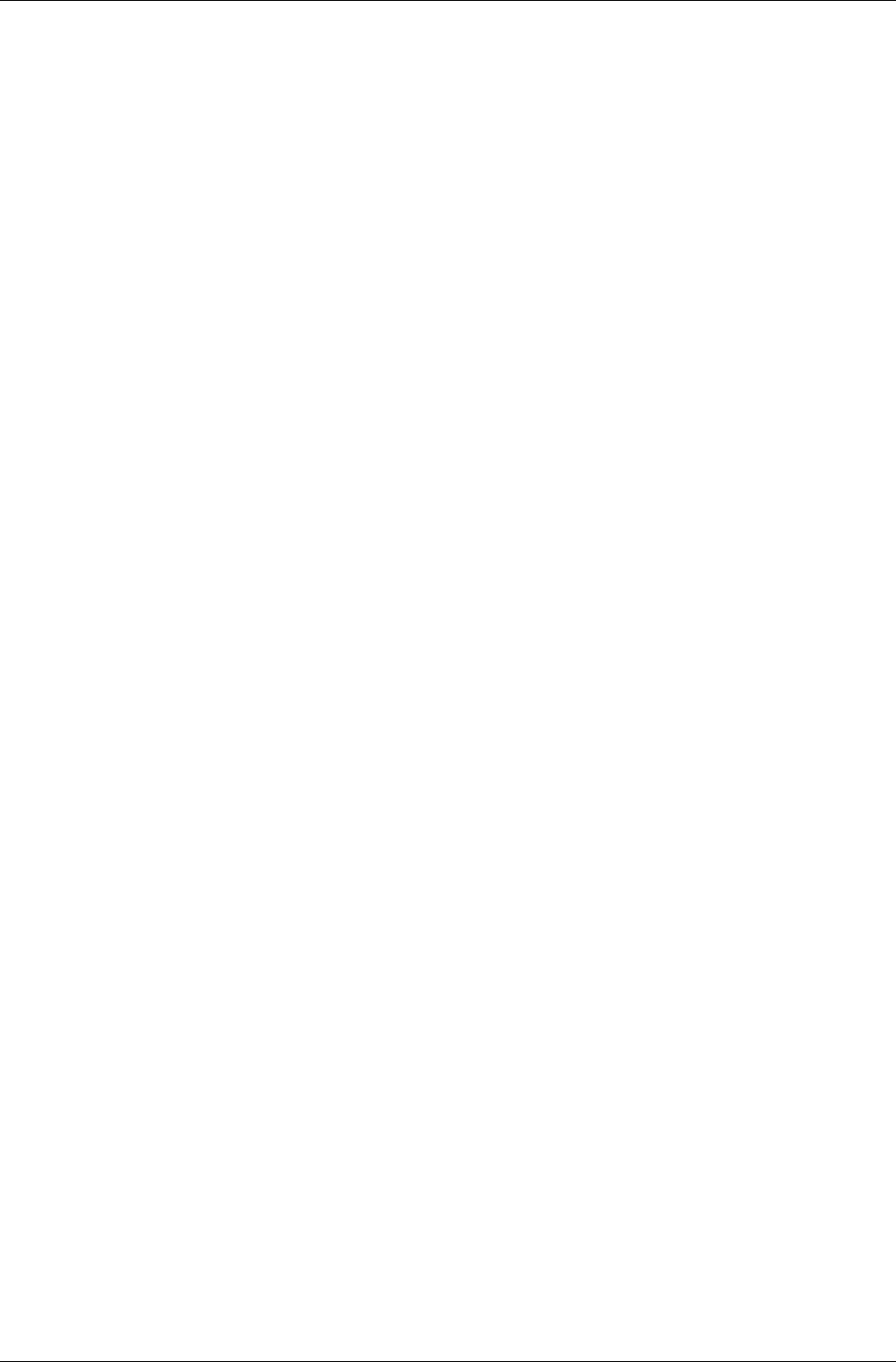
Chapter 4 - V.22bis Commands
Multi-Tech Systems, Inc. MT2456SMI-22 SocketModem Developer’s Guide 19
+IBC In Band Commands
This command provides a mechanism by which an in-band secondary channel may be implemented. This in-band
secondary channel can be utilized to transparently exchange commands and responses to/from the modem during a
data connection. This is an alternative approach to using the +++ escape sequence. The +IBC command also
provides a mechanism to exchange V.24 signaling via the secondary channel. The primary reason the In Band
Channel is implemented is to retrieve Caller ID type II information. The supported In Band Channel command is
compatible with the ITU-T V.80 standard but is not a full V.80 implementation. TheV.80 protocol supported is
described below. Portions of the V.80 protocol not described are not supported. Please refer Section 7 of the ITU-T
V.80 standard for more details..
Syntax +IBC=<IB>,<105>,<106>,<107>,<108>,<109>,<110>,<125>,<132>,<133>,<135>, <142>,<hook>
Defined Values
<IB> Enables or disables in-band control sequence.
0 Disable in-band control sequences.
1 Enable 7-bit in-band control sequences. Ignore eighth bit.
2 Enable 8-bit in-band control sequences.
<105> Enables or disables V.24 circuit type 105: RTS (Ready to Send).
0 Disable in-band reporting for this circuit.
1 Enable in-band reporting for this circuit.
<106> Enables or disables the circuit type 106: CTS (Clear to Send).
0 Disable in-band reporting for this circuit.
2 Enable in-band reporting for this circuit.
<125> Enables or disables the circuit type 125: RI (Ring Indicate).
0 Disable in-band reporting for this circuit.
1 Enable in-band reporting for this circuit.
<other> Not supported; leave ‘0’ for the unsupported circuit types.
<hook> Not supported; leave ‘0’.
Reporting Current or Selected Values
Command: +IBC?
Response: +IBC=<value>.<value>,<value>,0,0,0,0,<value>,0,0,0,0,0
Example: +IBC=0,0,0,0,0,0,0,0,0,0,0,0,0
Reporting Supported Range of Parameter Values
Command: +IBC=?
Response: +IBC: (0-2),(0-1),(0-1),0,0,0,0,(0-1),0,0,0,0,0)
Entering and Exiting In Band Active State
In Band Command mode will be active only when a modem connection has been made and DCD is on and the
modem is not in command mode. Upon a data connection before the connect message is sent, an In Band message
will be sent to the DTE to notify that all further data will be EM shielded and should be filtered. Any other time (i.e.,
command mode or idle mode) the DTE should allow all user data to be in pass-through mode in which the data is
unfiltered.
The DTE will receive one of the following active messages:
EM<60h><26h><62h>+IBC:1 to indicate In Band is active and the server is V.92
EM<60h><26h><62h>+IBC:2 to indicate In Band is active and the server is non-V.92
Upon Hang up or escape to command mode, the In Band command mode will end and the DTE should stop filtering
EM data and return to pass-through mode.
The DTE will receive the following inactive In Band message:
EM<60h><26h><62h>+IBC:0 to indicate In Band is inactive
EM Shielding Data
When in-band control sequences are enabled, the DTE and the modem must shield and filter data containing EM. In
V.80, in-band data is shielded from normal data by an EM character represented by a <19h> or <99h>. If the DTE’s
data contains an EM, an additional character is inserted.
For example, sending <19h> from the DTE to the modem requires inserting a <singleEM> or <5Ch> into the data
stream (e.g., <19h><5Ch>). The modem encodes this as one <19h> in the user data. On the other hand, sending
<19h> from the modem to the DTE requires inserting a <singleEM> or <7Ch>. Please refer to the V.80 standard for
more information.



